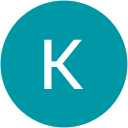Smart business owners use accounting as their secret weapon to stay ahead of competitors. “The language of business,” as accounting is known, gives business owners clarity to make smart decisions and achieve green growth. Research shows that 67% of business owners talk to their accountant before making key financial decisions.

The simple principles of accounting might look daunting at first. Yet these fundamentals build the groundwork for business success. Business accounting does more than track expenses and income. The accounting cycle helps businesses collect and summarize financial information systematically. These simple accounting concepts help you check performance, control cash flow, set prices, and get loans or investments. Your financial decisions become clearer and more confident when you understand everything in accounting. This applies to small business owners in Canada and beyond.
Why smart business owners prioritize accounting early
Smart business owners know that proper accounting practices are the life-blood of lasting success. Your company’s trajectory shapes up long before tax season when you implement solid accounting systems early.
Accounting helps you make better decisions
A crystal-clear picture of your financial health emerges with organized, up-to-date business accounting. This visibility helps you plan better and identify areas to cut costs or invest for growth. Strategic decisions stem from concrete financial data rather than gut feelings or estimates.
Financial accounting helps businesses optimize their daily operations and spot projects with growth potential. Accurate accounting information lets you:
- Create realistic budgets and forecasts
- Analyze product performance
- Track operational efficiency
- Develop short and long-term business strategies
Problem-solving stands out as an essential skill for 79% of CFOs who want to future-proof their finance departments and companies. Yet these challenges need reliable accounting data that only proper systems can provide.
It protects you from financial surprises
Your business plan should include effective internal controls for accounting and finance operations. These controls reduce the risk of lost assets by a lot and make all your financial operations more reliable.
On top of that, it helps you avoid unnecessary fees and penalties by keeping you compliant with regulations. Your financials get a more thorough review when you complete accounts early, without the last-minute rush. This proactive approach cuts down errors and will give a sense of peace.
The numbers paint a clear picture: 720 companies reported earnings errors in recent years, up from just 30% in 2019. These errors can lead to bad decisions, vendor issues, and loss of stakeholder trust. Proper accounting systems help catch problems before they become serious.
It builds trust with investors and lenders
Good corporate governance builds trust, transparency, and accountability that propel development and stability within organizations. Your accounting practices are the foundations of this governance structure.
So lenders and investors depend heavily on financial statements to assess your business’s creditworthiness and potential returns. They need a clear view of your financial health before providing financing. Financial experts say investors use transparent financial statements to assess company performance, profitability, and overall risk.
Accountants are a great way to get help for business loans. They assess current and projected cash flow to pinpoint exactly how much you can afford to borrow. Professional accountants also prepare financial documents that boost your credibility and speed up approvals.
Note that trust forms the life-blood of successful investor relationships. Clear and accurate financial metrics line up investor expectations with your company’s performance and future goals, which encourages confidence in your business.
Sound accounting practices show stakeholders you control your finances and value transparency. This improves your reputation and builds trust with key partners, often leading to better financing terms and investment opportunities.
Canadian businesses looking to strengthen their accounting practices and build investor confidence can benefit from professional guidance. Contact BOMCAS Canada today for all your accounting needs or to better understand your accounting requirements for your business in Canada.
Best practices for small business accounting in Canada
Sound accounting practices are the foundation of every successful Canadian business. My years of working with small business owners have taught me four proven strategies that deliver the best results, whatever your industry or company size.
Separate business and personal accounts
A dedicated business bank account and credit card are must-haves, yet half of business owners haven’t taken time to set one up. This basic step offers several vital benefits:
Your business and personal assets stay legally separate, which protects you if your business faces legal trouble. This barrier stops creditors from touching your personal finances.
Tax preparation becomes much simpler with separate accounts. Business expenses through dedicated accounts make it easy to spot deductible items like office supplies, travel, and utilities. The Canada Revenue Agency wants clear records of business transactions, and mixed accounts often trigger audit concerns.
Business owners with separate bank accounts show better financial health to lenders. Research shows 70% of small business owners without business checking accounts couldn’t get business loans over two years.
Use cloud-based accounting tools
Cloud accounting software has changed how small businesses handle their finances. These systems work better than old-school bookkeeping methods:
Since accuracy, reliability, and timing are basic accounting principles, cloud software stands out. It records transactions automatically and cuts down on manual entry mistakes. Popular platforms like Sage Accounting, QuickBooks, and Xero let you:
- Check financial data from anywhere, even with slow internet at 2 Mbps
- Let AI handle administrative work automatically
- Keep track of invoices and get paid quicker
- Create forecast reports to manage cash flow
My experience shows that a regular schedule for using these tools makes a big difference. One expert suggests to “block two hours at month’s end for pulling and reviewing these reports”.
Record transactions in real time
Immediate bookkeeping marks a big change from old accounting methods. This approach records financial data as transactions happen, not just periodically.
The advantages go beyond convenience. Recording transactions immediately shows you cash flow, revenue, and expenses right away. This clear view helps you:
Track tax-deductible expenses right away to save more money Spot suspicious activities quickly to reduce fraud risk Answer customer questions better with current financial information
Cloud software and AI automation work together with bank feeds, expense tracking, and invoicing to create a complete financial system.
Review financials monthly
Monthly financial reviews work like your business GPS. Look at these three key reports each month:
- Balance Sheet: Shows your financial health and spots potential cash problems early
- Income Statement (P&L): Shows your profit and helps track your goals
- Cash Flow Statement: Gives a full picture of operations and finds cash issues before they grow
Canadian businesses that check their books monthly learn vital lessons that help them grow. These reviews let you compare different time periods and spot trends that might signal problems or new chances for growth.
Take this time to check expense categories, look at upcoming big costs, watch unpaid invoices, and adjust your plans.
BOMCAS Canada can help you put these accounting best practices to work. Contact us today to learn about accounting solutions for your Canadian business.
Types of accounting every business owner should know
A solid grasp of different accounting types is vital to handle your business’s financial aspects well. My work with Canadian entrepreneurs shows that choosing the right accounting method can make a huge difference in how you make decisions.
Financial accounting
Your business’s financial reporting system rests on financial accounting. This method follows standard accounting practices and looks at your company’s total numbers. It creates statements that give a complete picture of your overall financial health without diving into specific departments or product lines.
Two main types of financial accounting exist. Historical cost accounting (also called fair value accounting) shows assets at their purchase price, while current cost accounting (mark-to-market accounting) reflects their present market worth.
Financial accounting aims to create standard reports that outside parties like investors, lenders, and regulators can use. These reports must follow Generally Accepted Accounting Principles (GAAP) to ensure quality and consistency. Public companies must follow GAAP rules – it’s not a choice but a legal requirement.
Managerial accounting
Managerial accounting (or cost accounting) differs from financial accounting. It breaks your company’s numbers into useful segments—looking at departments, regions, business areas, product lines, or customer groups. This detailed view helps uncover information you might miss otherwise.
Here’s a real example: your company might show a healthy 30% net margin overall. Yet a closer look through managerial accounting could show one product line making an impressive 60% while another loses 20%. This detail lets you fix areas that don’t perform well.
Managerial accounting helps with three key management tasks:
- Planning: It turns business goals into numbers through forecasts and budgets
- Organizing: It helps assign resources and responsibilities to carry out plans
- Monitoring: It checks performance by comparing actual results with budgets
Tax accounting
Tax accounting follows specific rules set by tax authorities, which might differ from other accounting methods. You might need three different financial statements—one for taxes, another for financial accounting, and a third for management reports.
Tax authorities might require different asset depreciation rates than financial accounting uses. Tax accounting helps maximize deductions, handle tax obligations, and file correct returns. This approach minimizes what you owe while staying within the law.
Forensic accounting
Forensic accounting blends accounting expertise with detective work to find financial fraud or unusual patterns. This specialty helps investigate fraud, embezzlement, theft, and other money-related crimes.
Forensic accountants track money trails, talk to people, study financial records, and spot suspicious patterns. They investigate questionable financial activities, analyze complex data, and prepare evidence for court cases.
These specialists also help prevent fraud. They check internal controls, look at business processes, and set up systems to catch fraud early.
Even basic knowledge of forensic accounting can help you set up proper controls and shield your business from financial fraud.
Each accounting type plays its own part in managing your business finances. Learning these different methods helps you run your financial operations better, make smarter choices, and protect against financial risks.
BOMCAS Canada stands ready to help with your accounting needs or explain what your Canadian business requires for proper accounting.
Key financial documents and what they tell you
Financial documents act as your business compass. They give an explanation of past performance and light the way forward. These four significant reports will help you track your company’s financial health accurately and confidently.
Profit and loss statement
The profit and loss statement (P&L), also known as an income statement, shows your business’s profitability over time – usually monthly, quarterly, or yearly. This financial snapshot reveals how well your company generates sales, handles expenses, and creates profits.
A well-laid-out P&L has these key parts:
- Revenue (or sales): Money earned from your main business activities
- Cost of goods sold: Direct costs to produce your products or services
- Operating expenses: Daily costs like rent, utilities, and salaries
- Net income: Your bottom line showing total profit or loss
The P&L’s real value lies in showing how your company turns business activities into profit. You can spot important changes in revenues, costs, and earnings by comparing P&L statements from different periods. More than that, this document helps make smart decisions about pricing, where to put resources, and future investments.
Balance sheet
Your balance sheet captures your company’s financial position at one specific point in time. Unlike other financial reports that track money movement, this one shows everything your business owns and owes on a particular date.
Every balance sheet follows one basic equation: Assets = Liabilities + Shareholders’ Equity. This formula makes sure the document always balances. Here are the main components:
- Assets: Everything your business owns that has measurable value, from cash and inventory to equipment and property
- Liabilities: What your company owes to others, including loans, accounts payable, and expenses
- Shareholders’ equity: The owners’ value after subtracting what you owe from what you own
The balance sheet helps determine your company’s risk level, get loans, and analyze your financial standing. Regular reviews let you learn about your company’s cash position, ability to pay debts, and overall financial health.
Cash flow statement
Profits look great on paper, but cash flow determines if you can stay in business. The cash flow statement tracks all money moving through your business during specific periods.
This vital document breaks down into three parts:
- Operating cash flow: Money from core business activities
- Investing cash flow: Money from buying or selling assets
- Financing cash flow: Money from loans, investors, or equity
The cash flow statement shows if your business generates enough money to pay bills and keep running. You’ll understand whether positive bank balances come from profitable operations or temporary funding like loans. Therefore, good cash flow prevents the main reason 82% of small businesses fail—cash problems.
Trial balance
Your trial balance works as a quality control checkpoint for your accounting system. This worksheet puts all general ledger account balances in two columns—debits and credits—to check math accuracy.
Though not shared outside the company, this internal report serves several vital functions:
- Finds math errors in your accounting system
- Creates the base for financial statements
- Makes sure total debits match total credits
Businesses usually prepare three types of trial balances:
- Unadjusted trial balance: Original list before adjustments
- Adjusted trial balance: After accounting adjustments but before closing
- Post-closing trial balance: Final version after closing temporary accounts
A balanced trial balance shows math accuracy but might miss certain errors like omissions or wrong classifications. Yet it remains vital for keeping accurate financial records.
BOMCAS Canada stands ready to help with all your accounting needs and explain what your Canadian business requires.
Basic accounting concepts that drive smart decisions
Spreadsheets and calculators are just the beginning. Simple accounting concepts give you powerful tools to make strategic decisions. These core principles are the foundations of financial clarity that help you handle business challenges confidently and precisely.
Accrual vs cash basis
The difference between accrual and cash basis accounting comes down to timing of revenue and expenses. This timing affects your financial picture by a lot.
Accrual accounting records revenue when earned and expenses when incurred—whatever the cash movement. To cite an instance, your delivery business would record CAD 3,483.40 worth of services right away, even before getting paid.
Cash basis accounting works differently. Money only shows up in your books when it physically moves in or out of accounts. A CAD 1,393.36 fuel bill appears only after payment.
Canadian businesses must use accrual accounting, though farmers, fishers, and self-employed commission agents can pick either method. Accrual methods show a more accurate financial health picture by matching revenues with related expenses in the same period. All the same, small businesses often prefer the cash method for its simplicity and better cash flow tracking.
Fixed vs variable costs
Smart resource allocation and pricing strategies depend on knowing fixed and variable costs well.
Fixed costs stay the same no matter your production volume—rent, insurance, depreciation, and executive salaries. These costs continue even with zero production.
Variable costs change based on production levels. Materials, direct labor, shipping, and sales commissions rise or fall with output.
A steering wheel costing CAD 348.34 means 1,000 units would cost CAD 348,340.05 in variable costs. Your fixed factory rent of CAD 766,348.11 remains unchanged regardless of volume.
This knowledge helps you:
- Find your break-even point
- Set better prices
- Review equipment vs labor investments
- Spread fixed costs across more units for better efficiency
Gross margin vs net profit
These profit metrics reveal different aspects of business health and guide decisions about pricing, costs, and growth.
Gross margin shows the percentage left after subtracting cost of goods sold (COGS). It reflects production efficiency. Manufacturers usually target 25-35% gross margins.
Net profit margin gives a complete picture by including all business expenses beyond COGS, like operating costs, taxes, and interest. This bottom-line number shows your actual profit percentage from sales. A 15% net profit margin means keeping CAD 0.21 from each sales dollar.
Burn rate and runway
Growing businesses and startups must watch burn rate and runway closely to survive.
Burn rate shows how fast you spend cash reserves before reaching profit. It comes two ways:
- Gross burn rate: Monthly operating costs
- Net burn rate: Monthly cash loss (expenses minus revenue)
Runway shows how many months you can operate before running out of cash. Here’s how to calculate it:
Total Capital ÷ Monthly Operating Expenses = Runway
With CAD 1,393,360.20 in the bank and monthly expenses of CAD 139,336.02, you get a 10-month runway. Experts suggest keeping 3-6 months of expenses ready.
These core accounting concepts help you make evidence-based decisions that move your business forward. BOMCAS Canada stands ready to help with your accounting needs and explain Canadian business accounting requirements.
How to work with accountants and bookkeepers effectively
A productive relationship with financial professionals can make the difference between survival and success in business. You need to know how to cooperate with these experts to maximize their value to your company.
What to expect from a CPA
A Chartered Professional Accountant (CPA) delivers way beyond the reach and influence of simple tax filing services. CPAs serve as mutually beneficial allies who stay current with tax laws, accounting standards, and financial regulations. Their expertise goes beyond number-crunching to:
- Strategic business advice throughout the year
- Business modeling and financial forecasting support
- Tax liability reduction through proactive planning
- Credibility building with investors and lenders
CPAs must pass rigorous requirements and examinations as regulated professionals. Their certification will give a guarantee of high standards in integrity, competence, objectivity, confidentiality, and professional conduct.
When to hire a bookkeeper
Your business needs a bookkeeper when these signs appear:
Time becomes scarce. Calculate the hours you spend on bookkeeping multiplied by your hourly worth—then compare this against bookkeeper rates (typically CAD 41.80-50/hour).
Your books stay outdated. You’re essentially “flying blind” without access to current financial data for decision-making.
Cash flow visibility diminishes. Even successful businesses can fail because of poor cash flow management.
Tax season becomes overwhelming. Year-round cooperation with a bookkeeper keeps your records ready for your accountant.
How to prepare for tax season
Start by gathering these essential documents:
- Identification information and business registration details
- Previous year’s tax returns
- Business income records (bank statements, sales invoices)
- Expense summaries and receipts
- Capital asset information
- Details of business loans or grants
A year-round tracking system prevents last-minute rushes. Many accountants offer their own checklists as tax season begins.
Questions to ask your accountant
Build a stronger relationship by asking these insightful questions:
- “What changes could help my business financially?” Good accountants analyze operations to spot improvement opportunities.
- “How can I better organize my financial records?” This streamlines future tax filings.
- “Which tax deductions am I eligible for?” Make sure you get all available tax benefits.
- “What’s your approach to tax planning?” Their style should match your business goals.
- “Will you help outside of tax season?” The best accountants support you year-round.
Bookkeepers and accountants create uninterrupted flow of financial information through ideal partnerships. Bookkeepers manage daily recording while accountants utilize this data for strategic planning. Contact BOMCAS Canada today for all your accounting needs or to better understand your accounting requirements for your business in Canada.
Using accounting to grow your business
Your business’s financial information holds valuable secrets that can push your business forward with proper analysis and application. Turning accounting data into growth strategies needs more than simple bookkeeping skills.
Forecasting with real-life data
Smart business decisions about hiring, budgeting, and planning stem from analyzing past performance data, including revenue, cash flow, and expenses. Financial forecasting helps you make informed choices rather than relying on guesswork. The quickest ways to forecast include:
Percent of sales forecasting calculates future metrics as a percentage of projected sales. This method works best for items that grow along with revenue. Businesses of all sizes might tap into multiple linear regression that factors in several performance variables at once.
Market research becomes vital for startups that lack historical data. It gives an integrated view based on competition, market conditions, and consumer patterns.
Improving pricing and margins
Your profit margins depend heavily on strategic pricing. Value-based pricing captures more value from each sale instead of just covering costs.
Identifying your high-margin products or services lets you focus sales efforts where they matter most. This targeted strategy can boost your overall profitability by a lot without needing extra resources.
Regular financial analysis reveals ways to cut costs while maintaining quality. You might renegotiate supplier contracts, optimize inventory management, or boost operational efficiency.
Tracking ROI on marketing and sales
Marketing ROI (MROI) shows what you get back from your marketing spend. This key metric helps you learn about which channels add most to your bottom line.
The simple formula—(Marketing Value − Marketing Cost) / Marketing Cost—works for every campaign across channels. Resource allocation becomes clearer as you track performance across different channels.
To name just one example, see email marketing. It delivers an average ROI of 3,800%, making it one of the best investments for most businesses.
Planning for funding or expansion
Your current financial position and future capital needs form the foundations of successful business growth. Solid accounting data supports these expansion plans.
Your accountant helps determine growth requirements through data analysis and ROI projections, answering key questions like:
- How much capital is required for expansion?
- Can your current cash flow support growth?
- What returns can you expect on investment?
This financial clarity helps create realistic growth plans that reduce risks and avoid potential problems.
BOMCAS Canada stands ready to handle your accounting needs or explain how accounting can help your Canadian business grow.
Integrating accounting with your business tools
Modern accounting extends beyond basic bookkeeping—it runs on integration with your other business systems. Your business can achieve boosted efficiency and deeper insights through this interconnected approach.
Connecting accounting software with CRM
Your accounting software’s integration with Customer Relationship Management (CRM) systems creates a single source of truth for customer information by eliminating duplicate data entry. Security improves as this centralized approach reduces the risk of confidential information falling into wrong hands.
Sales teams can view customer payment statuses while accounting teams access order histories without manual cross-referencing. The connection lets you create detailed reports like sales-by-customer-by-product that reveal purchasing patterns and profit margins.
Automating invoicing and payments
The automated invoice processing market continues to grow—reaching CAD 4.74 billion in 2024 with projections of CAD 12.40 billion by 2031. Businesses increasingly embrace automation to minimize manual data entry and reduce errors.
Payment gateway connections with accounting software streamline your accounts payable and receivable process. Your system captures invoice data automatically, verifies it against purchase orders, routes for approval, and schedules payments with minimal human intervention.
Tracking overdue accounts
Aging accounts receivable reports are the foundations for effective collection activities. These reports show past-due balances by timeframes (typically 30-day windows) to help you identify clients with substantial outstanding balances quickly.
Accounting dashboards display the number and total dollar amount of past-due invoices prominently. You can explore underlying data with a simple click. This clear visibility helps you prioritize collection efforts and maintain healthy cash flow.
Using dashboards for live insights
Financial dashboards turn complex data into accessible visual insights and provide a detailed overview of your company’s performance. Unlike traditional monthly or quarterly reports, dashboards give you live data access. Your business decisions become swift and informed, substantially affecting your bottom line.
These visualization tools make financial information available across your organization. Even team members without finance backgrounds can understand complex data. You can tailor custom dashboards to highlight metrics most relevant to your specific business needs.
Contact BOMCAS Canada today to understand your accounting needs or get support for your business in Canada.
Conclusion
Accounting serves as the backbone of successful business operations, as we’ve seen in this piece. It isn’t just about compliance or tax preparation—it’s a powerful strategic tool that gives clarity and direction to your business.
Learning simple accounting principles changes how you understand your business’s financial health. Proper financial records give you the confidence to make informed decisions instead of relying on gut feelings. The financial insights we’ve explored—from balance sheets to burn rates—help you spot opportunities and avoid potential risks.
Smart business owners see accounting as their competitive advantage. They know proper financial management links directly to business growth, investor confidence, and operational efficiency. Knowing how to read financial statements helps with strategic planning and provides credibility when you need funding or partnerships.
Good accounting doesn’t require you to become a financial expert overnight. The concepts we’ve covered are the foundations you can build upon gradually. Many successful entrepreneurs start with simple practices and grow their financial literacy over time with professional guidance. BOMCAS Canada stands ready to help with all your accounting needs or to explain your accounting requirements for your business in Canada.
Your investment in accounting knowledge improves cash flow management, pricing strategies, and paths to profitability. A natural integration of accounting with other business systems creates a unified view that improves success in every aspect of your company.
Numbers tell your business story through accounting. The better you understand this language, the better you can write your company’s next chapter.
Key Takeaways
Smart business owners leverage accounting as a strategic weapon, not just a compliance requirement. Here are the essential insights that separate successful entrepreneurs from the rest:
• Start accounting systems early – 67% of business owners consult accountants before major decisions, and proper systems prevent 82% of cash flow failures
• Separate business and personal finances immediately – This provides legal protection and simplifies taxes, yet 50% of owners still haven’t opened business accounts • Use real-time cloud accounting tools – Automate transaction recording, access data anywhere, and gain instant visibility into cash flow and expenses
• Master the four core financial statements – P&L, balance sheet, cash flow, and trial balance provide complete visibility into business health and performance
• Understand accrual vs cash basis accounting – This timing difference dramatically impacts your financial picture and strategic decision-making capabilities
• Integrate accounting with business tools – Connect CRM, automate invoicing, and use dashboards for real-time insights that drive growth
When implemented correctly, these accounting fundamentals transform from administrative burdens into powerful competitive advantages that fuel sustainable business growth and investor confidence.
FAQs
Q1. Why is separating business and personal finances important for small business owners? Separating business and personal finances is crucial as it provides legal protection, simplifies tax preparation, and improves your chances of securing business loans. It creates a clear distinction between personal and business assets, making it easier to track business expenses and demonstrate financial stability to lenders.
Q2. What are the benefits of using cloud-based accounting tools for small businesses? Cloud-based accounting tools offer numerous advantages, including real-time access to financial data from anywhere, automated transaction recording, reduced manual entry errors, and the ability to generate forecast reports for better cash flow control. These tools also facilitate easier collaboration with accountants and provide a more comprehensive view of your business’s financial health.
Q3. How often should business owners review their financial statements? Business owners should review their financial statements at least monthly. Regular reviews of key documents like the balance sheet, income statement, and cash flow statement help identify trends, spot potential issues early, and make informed decisions about the business’s financial direction.
Q4. What’s the difference between gross margin and net profit? Gross margin measures the percentage of revenue remaining after subtracting the cost of goods sold, reflecting production efficiency. Net profit margin, on the other hand, considers all business expenses including operating costs, taxes, and interest, showing the percentage of each sales dollar that becomes profit. Both metrics are crucial for understanding different aspects of business profitability.
Q5. How can integrating accounting software with other business tools benefit a company? Integrating accounting software with other business tools like CRM systems can significantly improve efficiency and provide deeper insights. It eliminates duplicate data entry, creates a single source of truth for customer information, automates invoicing and payment processes, and enables real-time financial dashboards. This integration allows for better decision-making based on comprehensive, up-to-date financial data across all aspects of the business.










 View Our Location
View Our Location





 181 Meadowview Bay, Sherwood Park, AB T8H 1P7, Canada (Online Clients Only)
181 Meadowview Bay, Sherwood Park, AB T8H 1P7, Canada (Online Clients Only)